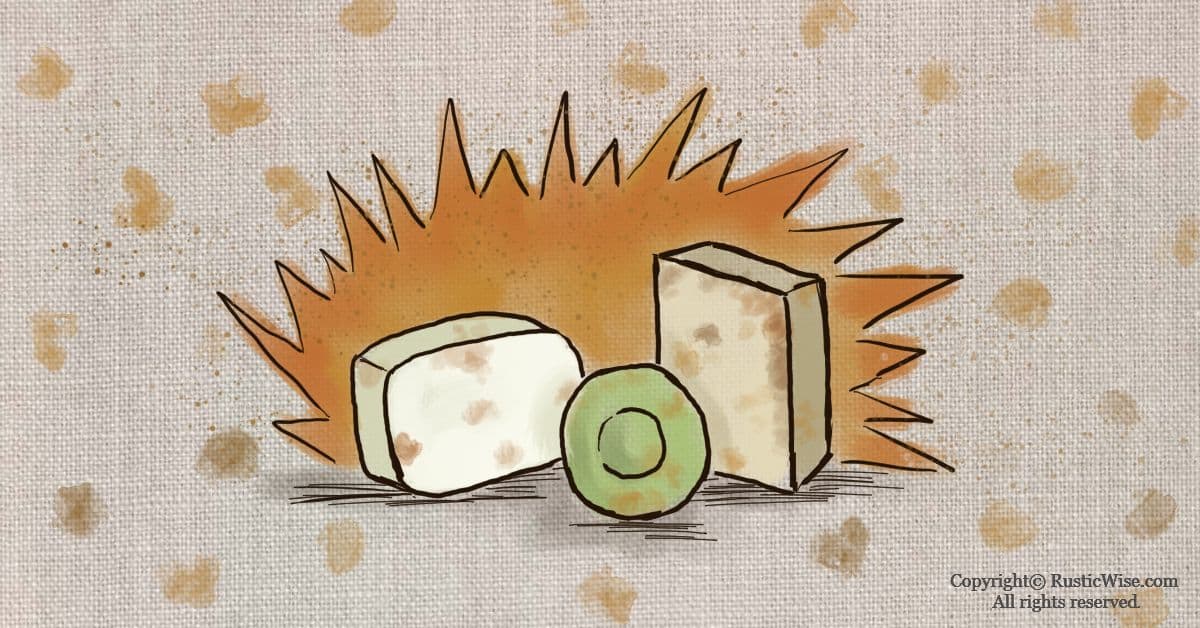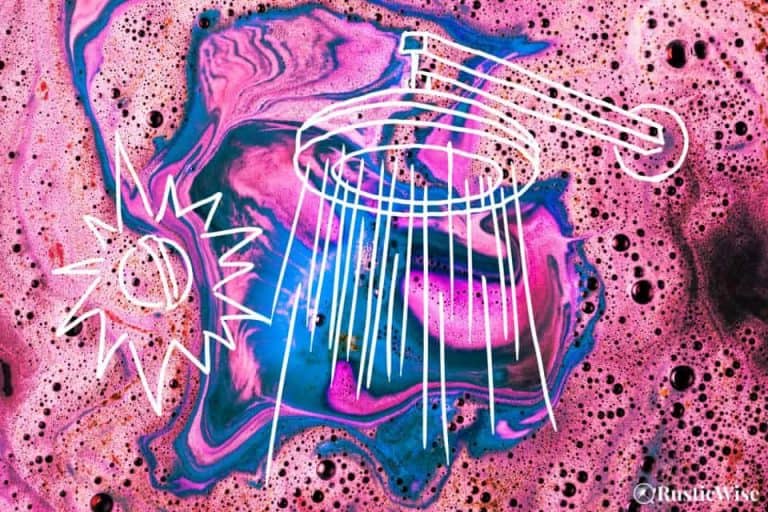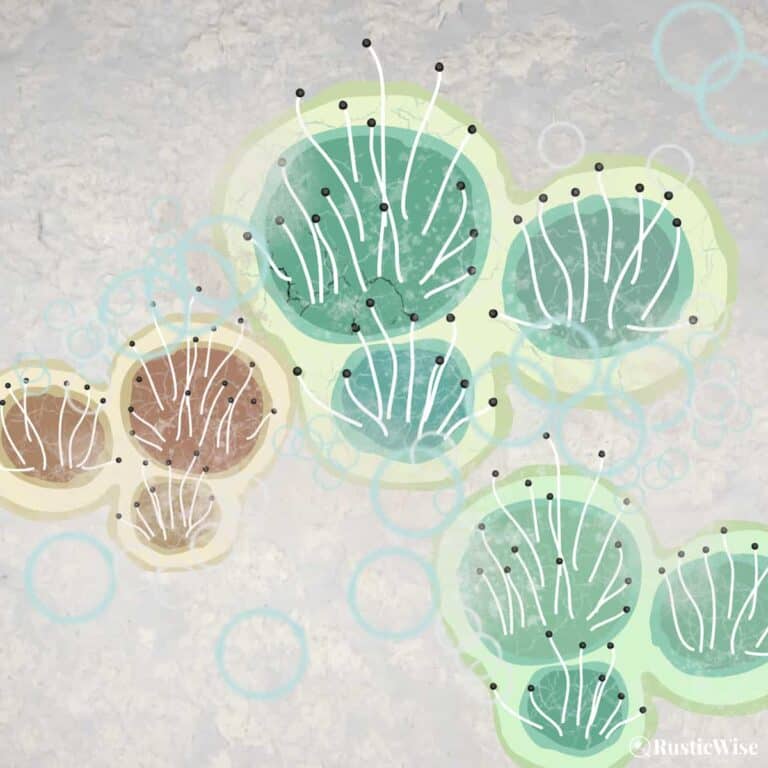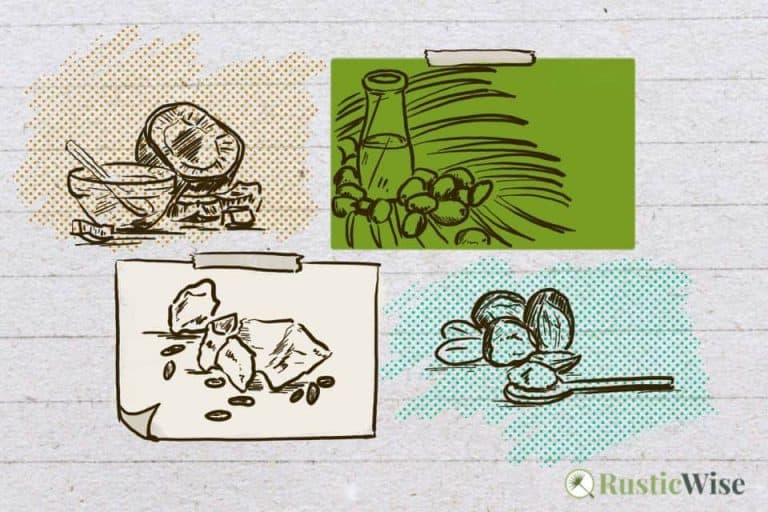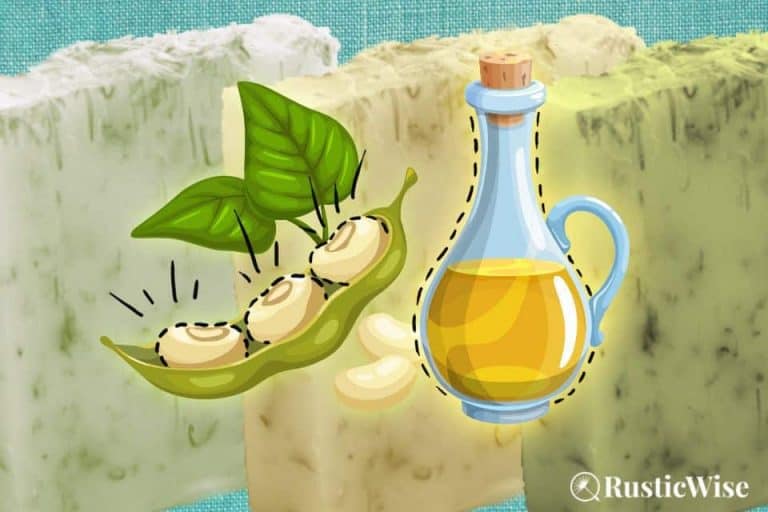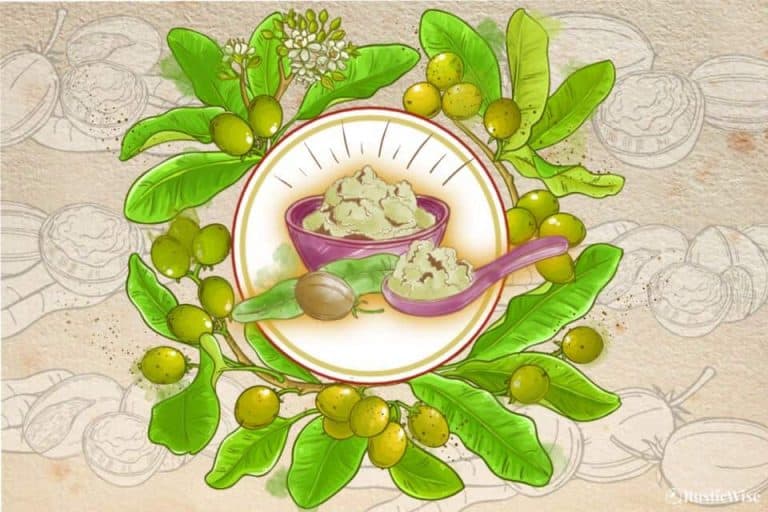8 Causes of Orange Spots in Homemade Soap and What To Do About It
Even with the best intentions and meticulous measurements, sometimes it happens. We’re talking about orange spots in homemade soap. This phenomenon is better known as dreaded orange spots (DOS), because let’s face it, they’re dreadful. DOS occurs for a variety of reasons, most commonly due to oxidation, contact with metals, too much excess oils (superfatting), and oils or additives like fresh purées going rancid. DOS doesn’t affect the usability or safety of the soap, mostly just its appearance.
Orange spots in homemade are frustrating because you’ve spent your precious time and money to produce a lackluster batch of soap. But don’t throw in the towel just yet. DOS happens to everyone, even experienced soapmakers.
Let’s explore more about just what orange spots in homemade soap are all about.
Is it safe to use soap with orange spots?
Yes, technically soap with orange spots is still safe to use. It still cleanses like normal soap. Orange spots alone shouldn’t deter you from using it. It’s when orange spots are accompanied by a rancid odor, or a sticky film that you should use your judgement whether you salvage it or toss it.
Trust your nose. If you use rancid soap with DOS and a foul odor, you run the risk of the odor lingering on your skin—something nobody wants!
If your bars of soap have orange spots without any nasty odors, feel free to keep on using them.
In the spirit of not wasting, you could store your batch of spotted soap for personal use. If you were hoping to give your soap away to friends or family, sorry, it looks like you might need to try again.
What to do with spotted soap
If the soap has minor orange spots here and there, you can try cutting orange spots off.
It’s best to store spotted soap separately from your “good” bars of soap. This is just a precaution to ensure any potential contamination from DOS isn’t transferred to other soap bars. (I’ve never heard of orange spots on soap transferring from one bar to another, but it’s good to stick on the safe side!)
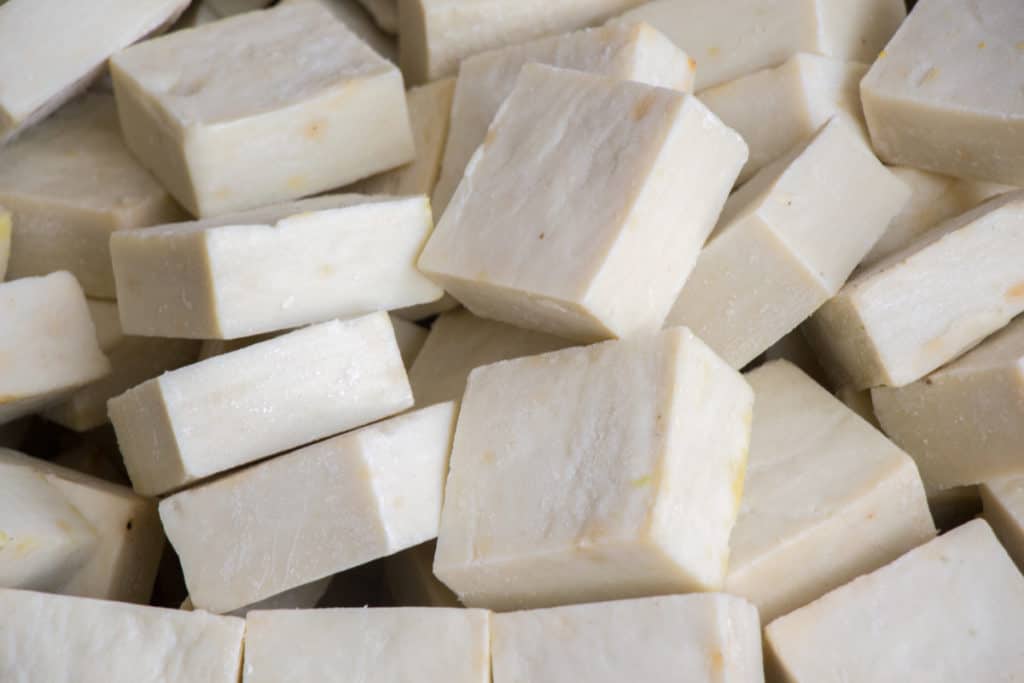
Credit: Yay Images
When do orange spots appear?
DOS can pop up unexpectedly like a surprise (unwelcome) guest anytime: during the curing process, shortly after, and even months after.
They are dreadful indeed.
You may only have one or two orange spots on a bar of soap. Or, you may have many blotches of orange covering the surface. Orange spots cover the color spectrum from light-orange to deep rust. Orange spots may be large, small, or somewhere in between.
What causes orange spots in homemade soap?
There are a variety of factors that contribute to DOS, namely the type of soap ingredients used, and the age of the ingredients. One or more of these may have caused your soap to turn spotty.
- Oxidation and rancidity: Exposure to elements like oxygen, moisture, heat, sunlight, or household contaminants cause excess oils in soaps to break down (or oxidize) over time. This leads to rancidity which is often accompanied by an unpleasant odor. This is very common in soap bars made from scratch using cold process. Spotted soap isn’t anything new.
- Old oils/fats: Many soapmakers make the mistake of using any old bottle of, say, olive oil for making soap. The reality is that all oils have a best-by date, and no oils last forever. If you’ve inadvertently used a bottle of oil that’s been sitting on your shelf for years, this may be a contributing factor to DOS.
- Old fragrances or essential oils: Old fragrances and essential oils are also prone to oxidation. Every essential oil has a different shelf life. A few EOs with a shorter shelf life of 1-2 years include grapefruit, lemon, lime, mandarin, and tangerine.
- Excess oils (superfatting): When you’ve crafted a batch of soap with high superfat content (lye discount), you’re left with excess oils. These “extra” oils didn’t go through saponification (didn’t turn to soap) and are more prone to spoilage. While having soap with high superfat content creates a more luxurious soap with moisturizing properties, you should limit the amount of superfat to less than 6 percent.
- Oils high in linolenic and linoleic fatty acids: Oils high in linolenic and linoleic fatty acids increase the chance of rancidity. While one of the great joys of making homemade soap is using lovely oils you won’t find in mass-produced soaps, sometimes these contribute to DOS. Aim to keep these types of oils to less than 15 percent of the total. A few examples of oils high in linolenic and linoleic fatty acids include:
- Apricot kernel
- Canola
- Grapeseed
- Sweet almond
- Soybean
- Sunflower
- Quality of water: Ideally when soapmaking, you’ll use distilled water. Some soapers may be fine using plain tap water. Others won’t be as lucky. Since water quality varies greatly, the gold standard is using distilled water to remove any hard minerals or impurities in the water from affecting the quality of your soap.
- Contact with certain metals: Ensure you’re working with 100 percent stainless steel equipment utensils and containers (which are lye-safe) when soaping. Avoid using other types of metal which may cause soap to oxidize. Many soapers like to cure their batches of soap on metal racks. Ensure these metal racks are plastic-coated to prevent soap from possibly oxidizing.
- High humidity: During the curing process, it’s important to store your batch of cold process soap in a dry, dark, cool place. During curing, the soap batter hardens as excess water evaporates. If your home is humid, the soap doesn’t get a chance to shed the water leading to DOS developing. A dehumidifier can help.
Tip: Check out the linolenic and linoleic fats in common soapmaking oils on this handy Oils List.
Additives that may help prevent orange spots
Kevin Dunn, a “soap scientist,” conducted an experiment using different kinds of natural and artificial additives in pure olive oil soap and observed whether they helped to prevent DOS. He tested grapefruit seed extract, vitamin C, vitamin E, sodium citrate, butylated hydroxytoluene (BHT), rosemary oleoresin extract (ROE), and sodium ethylenediammine tetraacetate (EDTA).
Tests were done using the above preservatives individually. The additives that are most successful in preventing DOS are butylated hydroxytoluene (BHT), rosemary oleoresin extract (ROE), and sodium ethylenediammine tetraacetate (EDTA).
However, the additives that best prevented orange spots in homemade soap was a combination of both BHT and sodium citrate.
Dunn notes that some people may be hesitant to use BHT and Sodium Citrate as they are artificial additives.
It’d be interesting to know exactly what kind of olive oil was used in the experiment, and how old it was.
Tips on extending shelf life of soap: If you’re wanting to go the natural route with preventing DOS, stick with using 0.1 percent rosemary oleoresin extract. (Note that ROE is not the same thing as rosemary essential oil.) If you’re comfortable using artificial additives, then your best bet would be to use 0.1 percent BHT and sodium citrate.
Tips for preventing orange spots in homemade soap
Besides using additives, there are other ways to prevent DOS in your next batch of soap.
- Proper storage of soap: Dry, dark, and cool is the name of the game. Once your soap has fully cured, it’s important to store it properly. With cold process soaps, it’s best to allow for some airflow, even after they’re fully cured. Keep your bars of soap in an open rack for several weeks, or in a box with some ventilation for longer-term storage.
- Proper storage of oils: Same goes with any oils, fragrances, and essential oils you use for soapmaking—keep ‘em dry, dark, and cool.
- Cleaning and handling equipment: Ensure all soap molds and equipment are spotless before making your next batch. This helps remove any contaminants or residue that could possibly cause DOS.
- Select the right oils and recipes: As mentioned above, avoid using recipes with high superfatting, and avoid too many oils with high linolenic and linoleic fatty acids. Olive oil and coconut oil are two reliable oils that produce long-lasting soap.
- Proper equipment: Ensure all materials used during the soapmaking process lye-safe and are 100 percent stainless steel. Sometimes a utensil is labelled 100 percent stainless steel; however the bolts or screws that connect it are not. Avoid touching metal to soaps anytime during the 4-6 week curing process.
If you’ve experienced orange spots in homemade soap, no worries. Soapmaking is a learning process. So break out those gloves and soapmaking supplies, and try again!

Author: Theresa Tesolin
Theresa is co-founder of RusticWise. She helps people unleash their inner DIY spirit by encouraging them to get dirty and make or grow something from scratch.

